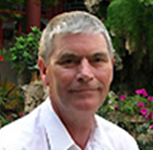
Forest Management
Numerous aspects need to be considered in forest management; this complexity means that management is adaptive and planning is continuous. This module describes resource inventories and land use priorities necessary for planning, shows how landbase productivity is determined, and explains the necessity of knowing the desired range of products from the forest as related to treatment regimes needed to achieve these goals.
Learning Objectives
After viewing this presentation and relevant support material, users should be able to:
- Describe and analyze the scope and complexity of forest management objectives.
- Identify resource inventories, forest productivity data, and stand treatments used in forest management.
- Explain and analyze management scenario planning.
- Describe how criteria and indicators are used to monitor management performance.
Presenter
Listen to Dr. John Nelson respond to the question: How did I get interested in this area of study? by clicking on his photo.
For information about Dr. Nelson, please check UBC, Faculty of Forestry
Module Resources
Presentation
Forest Management
Dr. John Nelson explains that forest management involves complex and often conflicting economic, environmental and social management decisions. Computer simulation models assist with this decision-making through generation of scenarios that reflect prioritization of management objectives and stakeholder values. Given the extended temporal and spatial scales involved, and the corresponding risk and uncertainty, forest management must be adaptive: observations of outcomes are monitored and adaptation of management occurs. Monitoring of management can be done using criteria (objective), indicators (what is measured) and targets (desired range for indicator value).
Other Resources
- Davis, L.S., Johnson, K.N., Bettinger, P.S. and Howard, T.E. 2001. Forest Management: To sustain ecological, economic and social values. 4th Edition. Wave Press, Inc.. 804p. ISBN 1-57766-436-1. Chapters 1,2,3,4,10.
- Forestry Handbook for British Columbia. Fifth Edition. 2005. Watts, S.B. and L. Tolland (eds.). University of British Columbia Forestry Undergraduate Society, Vancouver, BC. (Forest Level Planning. pp. 25-45).
- Seely, B., Nelson, J., Wells, R., Peter, B., Meitner, M., Anderson, A., Harshaw, H., Sheppard, S., Bunnell, F., Kimmins, K., and Harrison, D. 2004. The application of a hierarchical decision support system to evaluate multiple objective forest management strategies: A case study in northeastern British Columbia. For. Ecol. and Manage. 199: 283-305.
- Forest Certification, FSC. Criteria and Indicators for certification of sustainable forest management by the Forest Stewardship Council of Canada.
- Forest Certification, CSA. Certification of Sustainable Forest Management byt the Canadian Standards Association.
Potential Questions for use by Instructors
- A member of the community is concerned about sediment from logging and road construction entering streams in the forest and harming water quality. She proposes that sediment traps be placed every 100 metres in all steams throughout the forest and that staff measure the kilograms of sediment caught in each trap every week. She proposes a target of zero kilograms of sediment. Is this a good example of a SMART indicator (Specific, Measurable, Achievable, Relevant, Timely) for monitoring water quality? Assess each part of the SMART acronym to determine whether of not it is a good indicator.
- You have been hired by a community forest to estimate the long term sustained yield of their forest. The forest land base is comprised of a total area of 7,500 ha with 500 ha of lakes, 300 ha of steep, rocky areas, and 150 ha of roads. The productivity of the stands is found in the table below. The community wants the long term sustained yield calculated based on the rotation age that maximizes mean annual increment. What is the long term sustained yield of this forest?
Stand age and merchantable volume per ha for site index 20.


